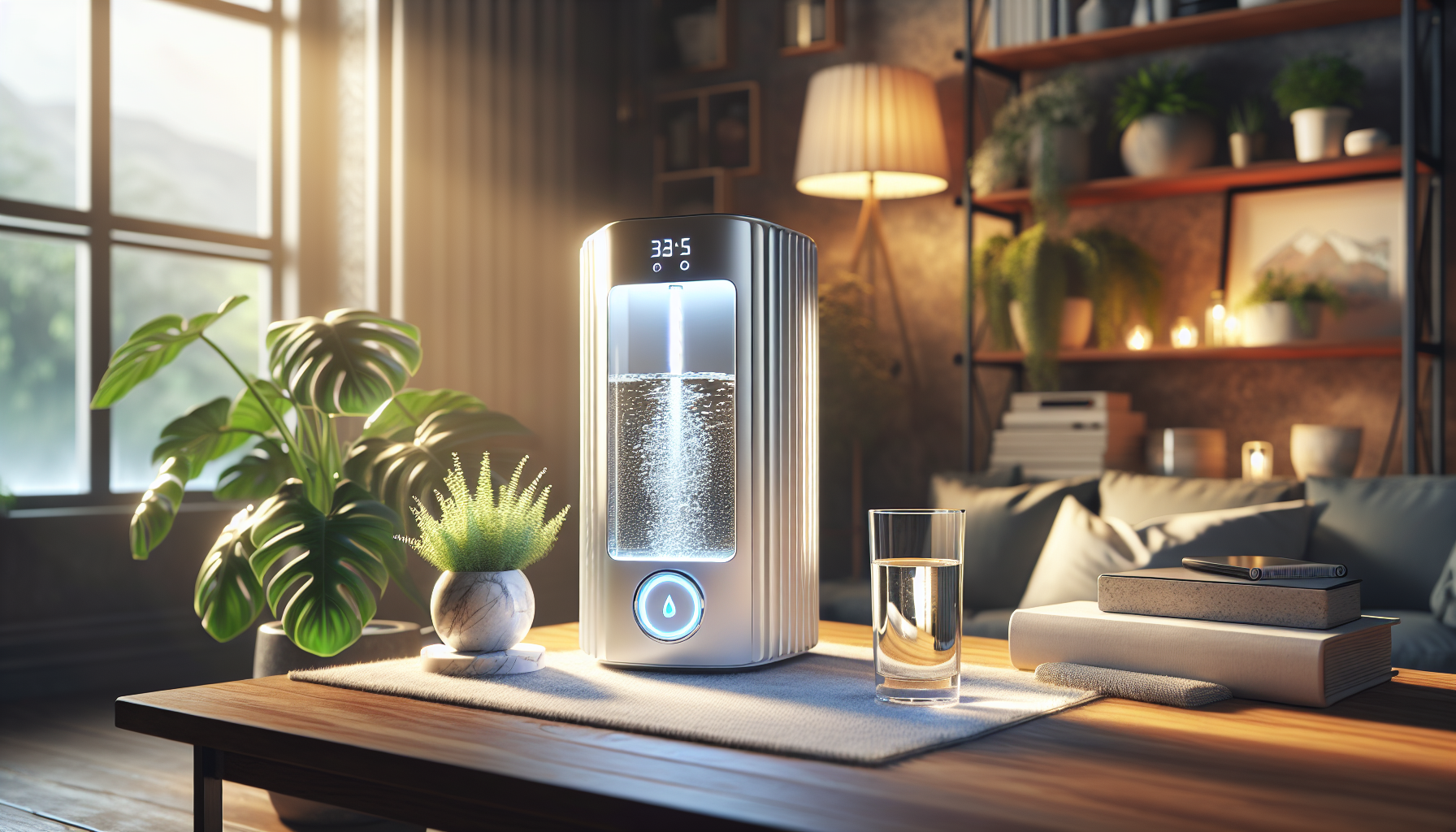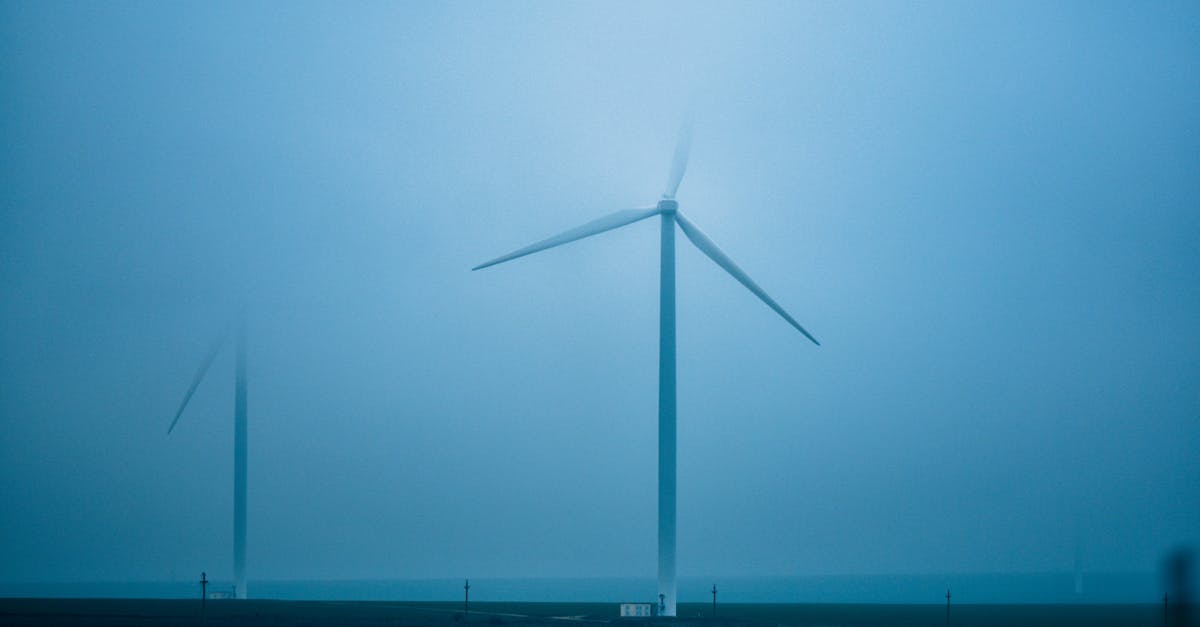Unveiling the Safety of Atmospheric Water: A Journey from Air to Drink

Is it Safe to Drink Water from an Atmospheric Water Generator?
The thought of drinking water straight from the air may seem like something out of a science fiction movie. But with the advancement of technology, atmospheric water generators (AWGs) are making it a reality. These clever devices extract moisture from the air and turn it into drinkable water. But before we start gulping it down, let’s take a closer look at how safe it is to drink water from an AWG.
Thank you for reading this post, don't forget to subscribe!
The good news is, water produced by AWGs can be perfectly safe to drink when the systems are properly maintained. To ensure the quality of your water, regular maintenance and cleaning are crucial. Imagine your AWG as a kitchen appliance that needs a little TLC now and then. Cleaning and filter changes keep your AWG running smoothly and producing fresh, clean water.
1. Understanding Atmospheric Water Generators
Understanding Atmospheric Water Generators
Picture this: a machine that can pull water right out of thin air. Sounds like magic, right? Well, atmospheric water generators (AWGs) are doing just that, and they’re becoming increasingly popular in homes, offices, and remote areas alike.
So, how do these clever devices work? AWGs mimic the natural process of condensation. As warm, humid air passes through the AWG, it’s cooled down, causing the water vapor in the air to condense into liquid water. This water is then collected and purified, giving you a fresh, clean source of drinking water.
The best part? AWGs can be used almost anywhere. Whether you’re in a dry, arid region or simply want a sustainable way to get your daily dose of H2O, AWGs offer a convenient and eco-friendly solution.
The Science Behind Water Generation
The Science Behind Water Generation
At the heart of atmospheric water generators (AWGs) lies a simple yet ingenious scientific principle: condensation. It’s the same process that causes water droplets to form on a cold glass on a hot day. Inside an AWG, warm, humid air is cooled down, causing the water vapor in the air to condense into liquid water. This water is then collected and purified, giving you a fresh, clean source of drinking water.
But how do AWGs achieve this cooling effect? Many AWGs use a heat exchanger, which is basically a series of cold coils that the warm, humid air passes through. As the air comes into contact with the cold coils, it cools down, causing the water vapor to condense. Other AWGs use a thermoelectric cooler, which is a solid-state device that can generate a temperature difference between two surfaces. This temperature difference can then be used to cool the air and condense the water vapor.
Regardless of the method used, the end result is the same: pure, clean drinking water from the air around us.
Types of Atmospheric Water Generators
Types of Atmospheric Water Generators
Atmospheric water generators (AWGs) come in all shapes and sizes, each with its own advantages and limitations. Here’s a quick guide to the different types of AWGs available:
Small, personal AWGs: These compact units are designed for individual use and can produce up to 5 gallons of water per day. They’re ideal for homes, apartments, and RVs. The benefits of small AWGs include their portability, ease of use, and relatively low cost. However, they may not be able to meet the water needs of larger households or businesses.
Medium-sized AWGs: These units can produce up to 20 gallons of water per day and are suitable for small businesses, offices, and homes with higher water consumption. They offer a good balance between capacity and cost, but they may require more maintenance than smaller AWGs.
Large-scale AWGs: These industrial-grade units can produce hundreds of gallons of water per day and are designed for large-scale applications, such as hotels, hospitals, and military bases. They’re highly efficient and reliable, but they also come with a higher price tag and may require professional installation.
When choosing an AWG, it’s important to consider your specific needs and budget. If you’re looking for a portable, low-cost option for personal use, a small AWG may be the best choice. For larger households or businesses, a medium-sized or large-scale AWG may be more suitable.
2. Safety Considerations for Atmospheric Water
Safety Considerations for Atmospheric Water
While atmospheric water generators (AWGs) can produce clean, safe drinking water, it’s important to be aware of potential risks and take steps to ensure the quality of your water.
One concern is the presence of contaminants in the air. AWGs can potentially collect dust, pollen, and other airborne particles, which can then be present in the water. To address this, many AWGs are equipped with filters to remove these contaminants. It’s important to regularly clean and replace these filters to ensure they’re working properly.
Another potential concern is the growth of bacteria in the AWG. Bacteria can thrive in the warm, humid environment inside an AWG, especially if it’s not properly maintained. To prevent bacterial growth, it’s important to clean your AWG regularly according to the manufacturer’s instructions. Some AWGs also have built-in UV disinfection systems to kill bacteria.
By following these simple safety precautions, you can help ensure that the water from your AWG is clean and safe to drink.
Potential Contaminants in Atmospheric Water
Potential Contaminants in Atmospheric Water
While atmospheric water generators (AWGs) can produce clean, safe drinking water, it’s important to be aware of potential contaminants that may be present in the air and can be collected by the AWG. These contaminants can include:
- Dust: Dust is made up of tiny particles of dirt, pollen, and other organic matter. While dust is generally not harmful, it can give water a cloudy appearance and affect its taste.
- Pollen: Pollen is a fine powder produced by plants. It’s a common allergen and can cause respiratory problems in some people.
- Microorganisms: Microorganisms include bacteria, viruses, and fungi. Some microorganisms are harmless, while others can cause illness. The growth of microorganisms in an AWG can be prevented by regular cleaning and maintenance.
The presence of these contaminants in AWG water can be minimized by using a high-quality AWG with effective filtration systems. It’s also important to regularly clean and maintain your AWG according to the manufacturer’s instructions.
Health Guidelines and Regulations
Health Guidelines and Regulations
To ensure the safety of atmospheric water for drinking, various health guidelines and regulations have been established by organizations such as the World Health Organization (WHO) and the Environmental Protection Agency (EPA).
The WHO has published guidelines for drinking-water quality, which include standards for microbiological, chemical, and physical contaminants. These guidelines are used by many countries to develop their own national drinking water standards.
The EPA has established the National Primary Drinking Water Regulations, which set enforceable standards for contaminants in public water systems in the United States. These regulations include standards for microbiological contaminants, such as bacteria and viruses, as well as chemical contaminants, such as lead and mercury.
By adhering to these guidelines and regulations, manufacturers of atmospheric water generators can help to ensure that the water produced by their devices is safe to drink.
3. Ensuring Water Purity with Filtration Systems
Ensuring Water Purity with Filtration Systems
To ensure the purity of water produced by atmospheric water generators (AWGs), various filtration systems are employed. These systems use a combination of different types of filters to remove contaminants and produce safe drinking water.
HEPA filters: HEPA (High-Efficiency Particulate Air) filters are designed to remove airborne particles, such as dust, pollen, and mold spores. They are highly effective at removing these particles, which can otherwise give water a cloudy appearance and affect its taste.
Activated carbon filters: Activated carbon filters are made from a porous material that has been treated with oxygen. This treatment creates a large surface area that can trap and hold contaminants, such as chlorine, pesticides, and heavy metals. Activated carbon filters are effective at removing a wide range of contaminants and improving the taste and smell of water.
Reverse osmosis systems: Reverse osmosis (RO) systems use a semi-permeable membrane to remove impurities from water. The membrane allows water molecules to pass through, while blocking larger molecules, such as bacteria, viruses, and minerals. RO systems are very effective at removing contaminants and producing pure water.
By using a combination of these filtration systems, AWGs can produce clean, safe drinking water that meets or exceeds drinking water quality standards.
Types of Filtration Systems
Types of Filtration Systems
Atmospheric water generators (AWGs) employ various filtration systems to remove contaminants and produce pure drinking water. Here are some of the most common types of filtration systems used in AWGs:
1. Mechanical filtration: Mechanical filters use a physical barrier to remove particles from water. These filters can be made from a variety of materials, such as cloth, paper, or ceramic. Mechanical filters are effective at removing large particles, such as dust, pollen, and sediment.
2. Activated carbon filtration: Activated carbon filters use a porous material that has been treated with oxygen to create a large surface area. This large surface area allows the filter to trap and hold contaminants, such as chlorine, pesticides, and heavy metals. Activated carbon filters are effective at removing a wide range of contaminants and improving the taste and smell of water.
3. Reverse osmosis: Reverse osmosis (RO) systems use a semi-permeable membrane to remove impurities from water. The membrane allows water molecules to pass through, while blocking larger molecules, such as bacteria, viruses, and minerals. RO systems are very effective at removing contaminants and producing pure water.
4. UV disinfection: UV disinfection systems use ultraviolet light to kill bacteria and viruses. UV light damages the DNA of microorganisms, making them unable to reproduce. UV disinfection systems are effective at killing a wide range of microorganisms, including those that are resistant to chlorine.
Each type of filtration system has its own advantages and limitations. By using a combination of different filtration systems, AWGs can produce clean, safe drinking water that meets or exceeds drinking water quality standards.
Maintenance and Hygiene
Maintenance and Hygiene
Regular maintenance and proper hygiene practices are essential to ensure the longevity and effectiveness of filtration systems in atmospheric water generators (AWGs). Here are some recommended maintenance and cleaning procedures:
1. Regular cleaning: The frequency of cleaning will vary depending on the type of filtration system and the quality of the air. However, it is generally recommended to clean the filters every 1-3 months. To clean the filters, simply remove them from the AWG and rinse them with water. If the filters are visibly dirty, you can use a mild soap solution to clean them.
2. Replace filters regularly: Filters will eventually become less effective at removing contaminants, so it is important to replace them regularly. The frequency of replacement will vary depending on the type of filter and the quality of the air. However, most filters should be replaced every 6-12 months.
3. Inspect the AWG regularly: In addition to cleaning and replacing the filters, it is also important to inspect the AWG regularly for any signs of damage or wear. If you notice any damage, contact the manufacturer for assistance.
By following these simple maintenance and hygiene procedures, you can help to ensure that your AWG continues to produce clean, safe drinking water for many years to come.
4. Conclusion: Making an Informed Decision
Conclusion: Making an Informed Decision
When properly maintained, atmospheric water generators (AWGs) can produce clean, safe drinking water. However, it is important to remember that AWGs are not a substitute for traditional water treatment systems. If you are concerned about the quality of your water, it is always best to have it tested by a qualified professional.
Before purchasing an AWG, it is important to do your research and consider your individual needs. Factors to consider include the size of your household, your water consumption, and the quality of the air in your area. You should also consult with a qualified expert to ensure that an AWG is the right choice for you.
With proper maintenance and care, an AWG can be a convenient and cost-effective way to produce clean, safe drinking water for your home or business.
Benefits of Atmospheric Water Generators
Benefits of Atmospheric Water Generators
Atmospheric water generators (AWGs) offer a number of benefits, including:
-
Access to clean water in remote areas: AWGs can be used to produce clean drinking water from the air, even in remote areas where traditional water sources are scarce. This makes AWGs an ideal solution for communities that are not connected to a municipal water supply.
-
Reduced environmental impact: AWGs do not require the use of chemicals or filters, and they produce no wastewater. This makes them a more environmentally friendly option than traditional water treatment systems.
-
Potential cost savings: AWGs can be a cost-effective way to produce clean drinking water, especially in areas where the cost of traditional water is high.
In addition to these benefits, AWGs can also contribute to a sustainable and healthy lifestyle. By reducing our reliance on traditional water sources, we can help to conserve water and protect the environment. And by drinking clean, healthy water, we can improve our overall health and well-being.
Additional Resources and Expert Advice
Additional Resources and Expert Advice
For more information on atmospheric water generators (AWGs) and drinking water safety, please consult the following resources:
- World Health Organization (WHO): https://www.who.int/watersanitationhealth/dwq/en/
- Environmental Protection Agency (EPA): https://www.epa.gov/ground-water-and-drinking-water
- Water Quality Association (WQA): https://www.wqa.org/
You can also consult with a qualified expert, such as a water treatment specialist or a doctor, to get personalized advice about your drinking water safety. When making decisions about your drinking water source, it is always best to seek professional guidance to ensure that you are making the best possible choice for your health and well-being.
Is it safe to drink water from an atmospheric water generator?
Yes, it is safe to drink water from an atmospheric water generator when proper filtration systems are employed. AWGs remove contaminants from the air and produce clean, pure water.
What are the benefits of using an AWG?
AWGs offer a number of benefits, including access to clean water in remote areas, reduced environmental impact, and potential cost savings.
How do I choose the right AWG for my needs?
When choosing an AWG, consider your household size, water consumption, and the quality of the air in your area. You should also consult with a qualified expert to ensure that an AWG is the right choice for you.
How do I maintain my AWG?
Regular maintenance is essential to ensure the longevity and effectiveness of your AWG. This includes cleaning and replacing the filters regularly, and inspecting the AWG for any signs of damage or wear.
Where can I find more information about AWGs?
For more information on AWGs and drinking water safety, please consult the following resources:
* World Health Organization (WHO): https://www.who.int/water_sanitation_health/dwq/en/ * Environmental Protection Agency (EPA): https://www.epa.gov/ground-water-and-drinking-water * Water Quality Association (WQA): https://www.wqa.org/



